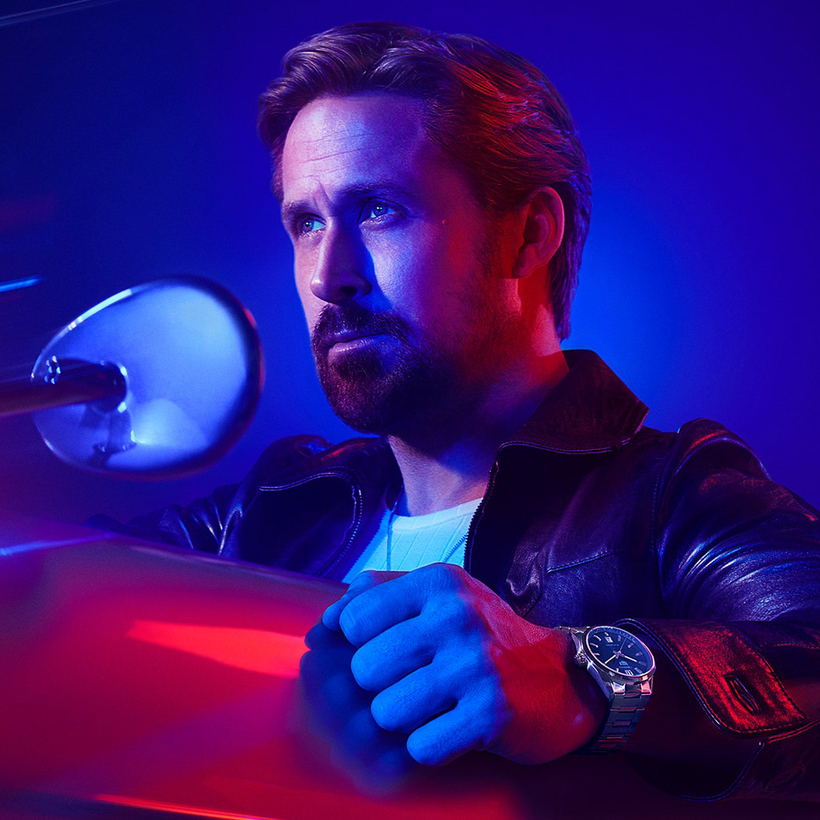For as long as I’ve been writing about watches, which, gentle reader, is approaching the alarming figure of 35 years, Tag Heuer has invoked the spirit of the late Steve McQueen to sell its timepieces.
As a posthumous king of cool, multi-brand salesman McQueen is nothing if not versatile: he has been used to shift sunglasses (dig the Persols that he wore in The Thomas Crown Affair), Ballantine’s scotch, and even Renault trucks. But when it comes to watches, this one-man Swiss Army knife of marketing really comes into his own.
His name is attached, unofficially, to the celebrated orange-hand Explorer II from Rolex (even though McQueen wore a Rolex Submariner). With the recent revival of interest in classic Cartier, the Cintrée he wore in The Thomas Crown Affair has come in for attention, and if you are interested, the pocket watch he consults at the beginning of the film is a Patek Philippe.
But it is Tag Heuer, previously Heuer, that has made the most of a relatively fleeting film association with McQueen. About the only thing most people remember from the lamentable 1971 film Le Mans, a self-indulgent plotless spin around the course of early 1970s motor racing, is the image of a very manly looking McQueen with a Heuer patch on his racing overalls and square Heuer Monaco on his wrist. Half a century on, it is still the best-known image of any of the brand’s ambassadors.

Now, at last, McQueen has a credible rival as Tag just signed Ryan Gosling to be the new face of the brand. It is a thoughtful and considered hire. Gosling is rich in women-want-to-be-with-him-and-men-want-to-be-him appeal, and, from a marketing perspective, he is virgin territory: reportedly highly selective about the roles he takes, he has also so far resisted the temptation to rent out his fame. But clearly Tag Heuer was persuasive. C.E.O. Frédéric Arnault says it was not just the money but the chance to collaborate creatively that tipped the balance.
Certainly, Gosling—whose Tag Heuer of choice, according to the brand, is its Carrera model, which starts at $2,700—has the right road-going credentials: McQueen had the Bullitt Mustang, Gosling has Drive’s Chevy Malibu; and just as McQueen and his motorcycle end The Great Escape in the barbed wire, so Gosling’s botched motorbike bank robbery brings about his demise in The Place Beyond the Pines. And if Gosling were to put his mind to it, I am sure he could improve on Le Mans.
Keeping to the automotive theme, I turned up the other night at London’s Fiskens, a garage in a cobbled Kensington mews, for the launch of one of the season’s most anticipated wristwatches. (I am being a little disingenuous; Fiskens is about as much of a garage as Harrods is a grocer.)
For those not in the habit of spending hundreds of thousands of dollars on motor vehicles that do not go as fast or hold the road as well as ordinary contemporary cars, Fiskens is the sort of place you go if you are seized by a sudden and desperate need for a Hispano-Suiza or a 1960s Bentley Continental. As such, it was the perfect venue for George Bamford, scion of the JCB earth-moving dynasty, and Karl-Friedrich Scheufele, co-president of family-owned watchmaker Chopard, to introduce their Mille Miglia–inspired collaboration: a limited-edition run of co-branded anthracite, DLC-coated chronographs with piston-like push-pieces and orange detailing on the dial and strap.

Chopard is a key sponsor of the Mille Miglia, the 1,005-mile race on public roads, from Brescia, near Milan, to Rome and back again, with each team of driver and navigator receiving one commemorative watch (and usually buying a second). The reborn Mille Miglia, revived as a historic rally in 1977 and, since 1987, held annually, is now longer lived than the original, which was run between 1927 and 1957, with appropriate breaks to accommodate World War II, before being banned in 1957 for excessive loss of life. The mid-50s was a time when even attending a motor race was potentially lethal: 83 spectators died at Le Mans in 1955, and 9 spectators were killed during the 1957 Mille Miglia, which also saw the death of daredevil nobleman Alfonso de Portago at the wheel of a Ferrari.
As well as being a cool watch, priced at $7,970, the Chopard x Bamford collaboration is another milestone in the development of the Bamford Watch Department, which started life as an aftermarket pimper of Rolex watches and was in great part responsible for the popularity of blackened P.V.D.-coated Rolexes during the noughties.
However, Bamford made the switch to legitimate, authorized horological tuning in 2017, when it was appointed as the official “customizer” of Zenith and Tag Heuer. Since then, BWD has worked with Bulgari, Franck Muller, and Girard-Perregaux, as well as launched a range of affordable own-brand watches, most recently a single-push-piece chronograph.
The new Mille Miglia collaboration shows the development of an identifiable aesthetic inspired by a visit to the archives of Tag Heuer, which resulted in the matte titanium BWD x Tag Heuer Aquaracer ($3,900), characterized by hi-vis orange detailing: a watch that deserved to enter the standard collection rather than be made in a run of just 1,500 pieces.
Unfortunately, if the new watch has a message, it is that Bamford collaborations and limited editions are becoming more, well, limited. There will be just 33 of these special Mille Miglia watches—one for every year that Chopard has sponsored the eponymous race.
Nicholas Foulkes, the author of more than 20 books on the arts and history, is a London-based writer and editor


